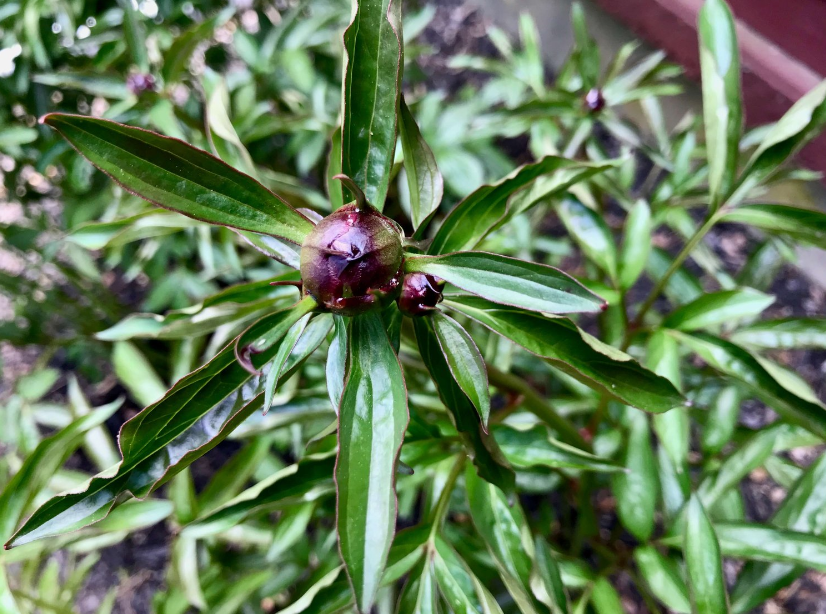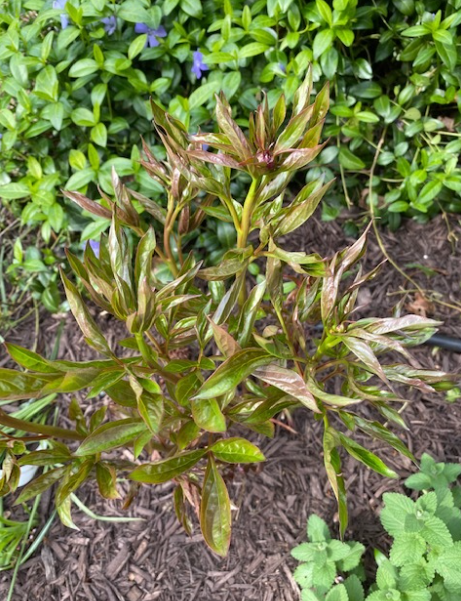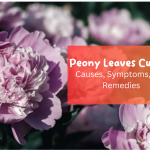Are your peony leaves curling, and you’re unsure why? Peony leaves curling can be a cause for concern, but understanding the underlying factors can help you address the issue and restore the health of your plants. There are various reasons why peony leaves may curl, including environmental factors, pest infestations, fungal diseases, watering issues, and nutrient deficiencies. By identifying the specific cause, you can implement targeted remedies such as providing proper sun exposure, controlling pests, managing fungal diseases, adjusting watering practices, and addressing nutrient imbalances. With the appropriate knowledge and actions, you can ensure your peony plants thrive, producing beautiful, healthy foliage and magnificent blooms.
Common causes of curly peony leaves:
Environmental Factors:
- Temperature stress: Extreme temperature changes, especially sudden cold snaps or heat waves, can cause peony leaves to curl. Insufficient protection against frost in winter or excessive heat in summer can lead to leaf curling. The plant’s natural response is to protect itself by curling the leaves inward or outward.
- Sun exposure: Intense sunlight can cause peony leaves to curl and develop burning symptoms. Peonies prefer bright but indirect sunlight, and exposure to direct midday sun or insufficient shade can exacerbate leaf curling.

Infestation by pests:
- Aphids: These tiny, sap-sucking insects are a common pest that can cause peony leaves to curl. As aphids feed on the plant’s tissues, they inject toxins that lead to leaf deformation. Aphid infestations are often accompanied by sticky honeydew and ants, which provide sweet excretions.
- Spider mites: These little pests are another common culprit behind leaf curls. Spider mites feed on the sap of peony leaves, which causes them to curl, turn yellow, and have a stippled appearance. The delicate webs can often see infestations they make on the leaves.
Fungal diseases:
- Botrytis Blight: This fungal disease, caused by Botrytis cinerea, can cause peony leaves to curl, turn brown or black, and develop spots or lesions. Botrytis blight thrives in high humidity and moist conditions, especially when peony leaves remain wet for extended periods. Crowded or poorly ventilated plants are particularly susceptible.
- Powdery Mildew: Powdery mildew is a fungal infection characterized by a powdery white or gray coating on the leaves, stems, and buds. As the disease progresses, peony leaves may curl, become distorted and show signs of stunted growth. Powdery mildew thrives in a warm, moist environment and can spread quickly in crowded plantings.
Problems with watering:
- Overwatering: Overwatering can lead to root rot and other moisture-related problems, causing peony leaves to curl. If the roots are constantly underwater, they become stressed, causing the leaves to curl and discolor.
- Flooding: Insufficient watering can lead to leaf curling. If peonies don’t get enough water, the leaves may curl as a defense mechanism to conserve moisture. The plant can go into a dormant state, and the overall health of the peony can be compromised.
Nutrient deficiency:
A nutrient imbalance or deficiency can manifest in several ways, including leaf curl. While peonies generally need balanced soil, certain deficiencies can contribute to leaf curl symptoms:
- Nitrogen Deficiency: Insufficient nitrogen in the soil can cause peony leaves to curl and turn yellow. Nitrogen is essential for healthy leaf development, and a deficiency can affect the overall growth and vigor of the plant.
- Potassium Deficiency: A deficiency of potassium can also lead to curling and discoloration of the leaves. Potassium is crucial for regulating water absorption and maintaining the plant’s overall health. A lack of potassium can lead to a poor water balance in the plant, resulting in curled leaves.
The shock when transplanting:
If peonies are transplanted or moved, they may experience temporary stress and exhibit leaf curling in response; This is usually a short-term issue; with proper care and time, the plants should recover and develop new healthy foliage.
Genetic Factors:
Some peony varieties have naturally curled leaves as part of their genetic makeup. These cultivars may have leaves with a unique curly or wrinkled appearance, a standard feature of the plant and not indicative of any underlying problems. It is essential to distinguish between genetic and leaf curl caused by environmental factors or disease.
Recognizing Curly Peony Leaves Symptoms:
Appearance:
- Curl: Peony leaves can curl inward or outward in whole or part. The degree of curling can vary depending on the underlying cause.
- Discoloration: In addition to curling, the affected leaves may also become discolored, such as yellowing, turning brown, or turning black, depending on the specific cause.
Associated Signs:
- Presence of Pests: Carefully inspect the leaves for signs of aphids, spider mites, or other pests. Look for tiny insects, webs, or sticky honeydew secretions.
- Fungal growth: Look at the leaves for powdery or cottony growth, which may indicate a fungal infection; this can be seen as white or gray spots on the leaf surfaces.

Remedies For Peony Leaves Curling
Environmental management:
- Temperature control: Protect peony plants from extreme temperature fluctuations by insulating them well in the winter and shading them in the hot summer. Mulch around the base of the plants can help regulate soil temperature.
- Sun exposure: Make sure peony plants get plenty of morning sun, but protect them from the bright afternoon sun. Consider shading using garden fabrics or strategically placing the plants near more extensive vegetation.
Pest control:
- Manual removal: If you discover an aphid or spider mite infestation, remove the pests manually by gently washing the leaves with a strong jet of water or wiping them with a damp cloth; this can help reduce the population and prevent further leaf curling.
- Natural enemies: Encourage beneficial insects such as ladybugs and lacewings, which feed on aphids and spider mites, to control pest populations naturally. It may be helpful to plant plants that attract these beneficial insects.
Fungal disease control:
- Pruning: Remove infected leaves and plant debris to minimize the spread of fungal spores. Disinfect pruning tools in between to prevent the spread of the disease.
- Fungicides: Fungicides may be required in severe fungal diseases such as botrytis or powdery mildew. Consult a local gardener or nursery to choose a suitable fungicide and follow the instructions carefully.
Watering and managing nutrients:
- Watering: Provide sufficient moisture without over-watering. Ensure the soil is well-drained and water the plants deeply, allowing the top few inches of soil to dry between waterings.
- Nutritional supplements: If deficiencies are suspected, supplement the soil with organic matter and use a balanced fertilizer according to the manufacturer’s instructions. Perform a soil test to identify specific nutrient deficiencies and adjust fertilization accordingly.
Conclusion for Peony Leaves Curling
In conclusion, understanding the causes and remedies for peony leaves curling, also known as peony leaves curling, is crucial for maintaining the vitality and beauty of your peony plants. You can effectively combat peony leaf curling by addressing environmental factors, managing pests and fungal diseases, optimizing watering practices, and addressing nutrient deficiencies. Regular monitoring, proper care, and a conducive growing environment will promote healthy leaf growth and ensure the long-term health of your peonies. Remember to take prompt action when you notice leaf curling, as early intervention can prevent further damage and encourage the recovery of your beloved peony plants. With the right strategies in place, you can enjoy your peonies’ vibrant and breathtaking blooms for years to come. Read article about Monstera Esqueleto: Unveiling The Rare Beauty Of This Unique Plant and Fiddle Leaf Fig Bacterial Infection: Causes, Symptoms, And Treatment in Avi Hoffman Garden.







